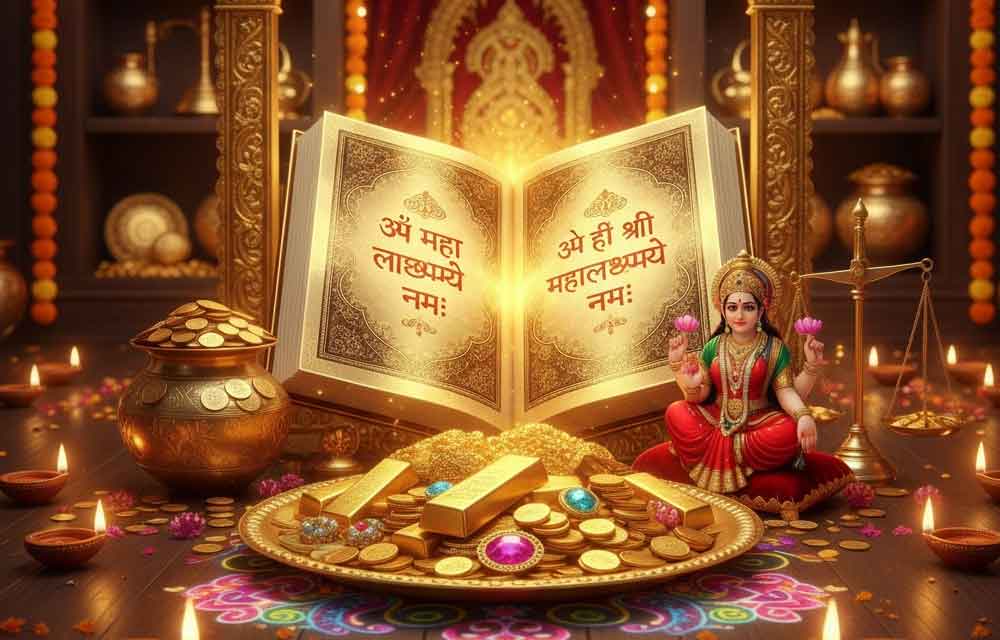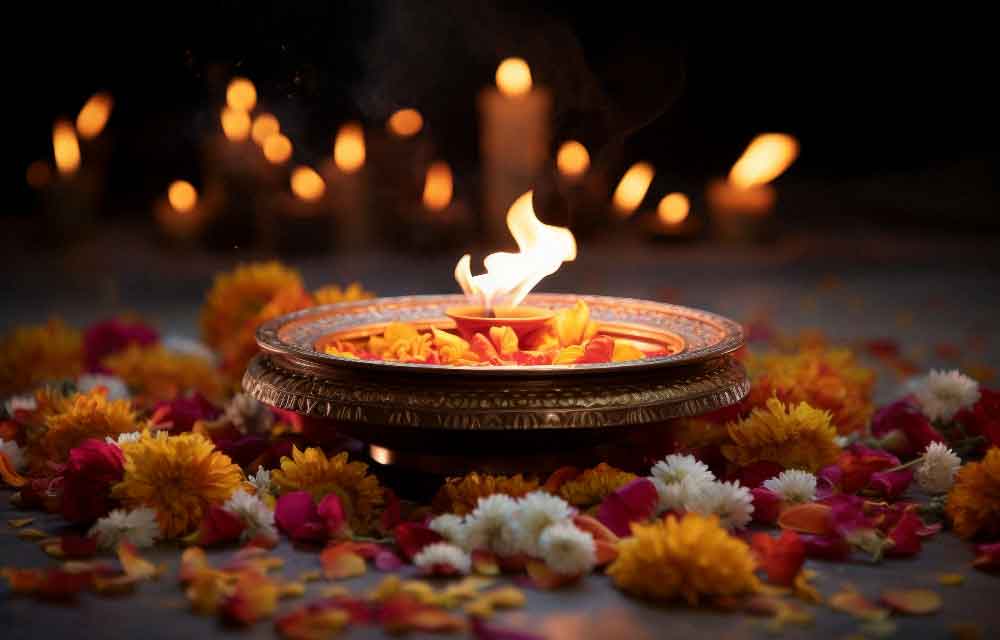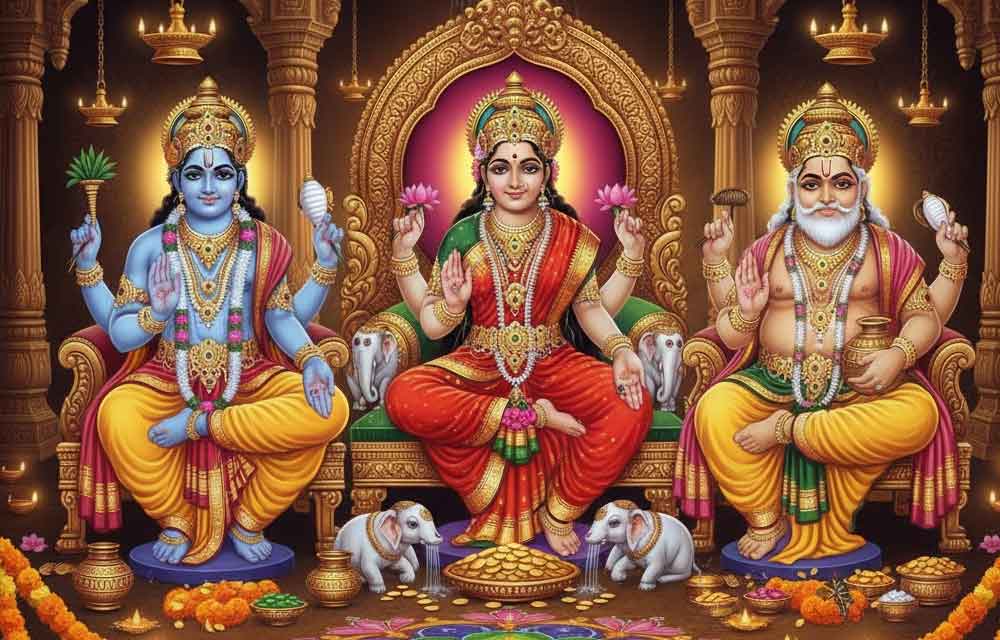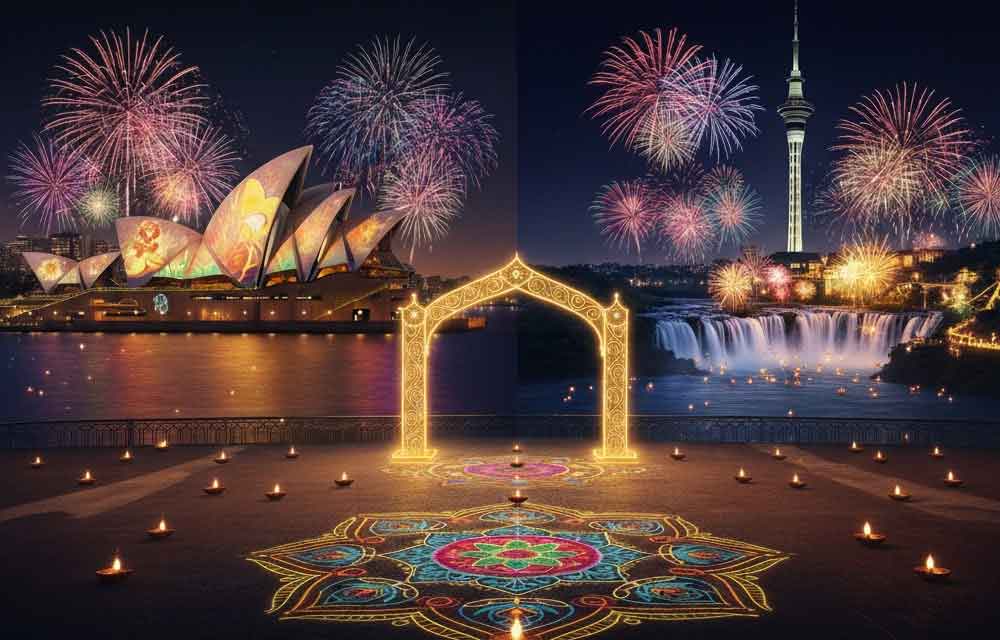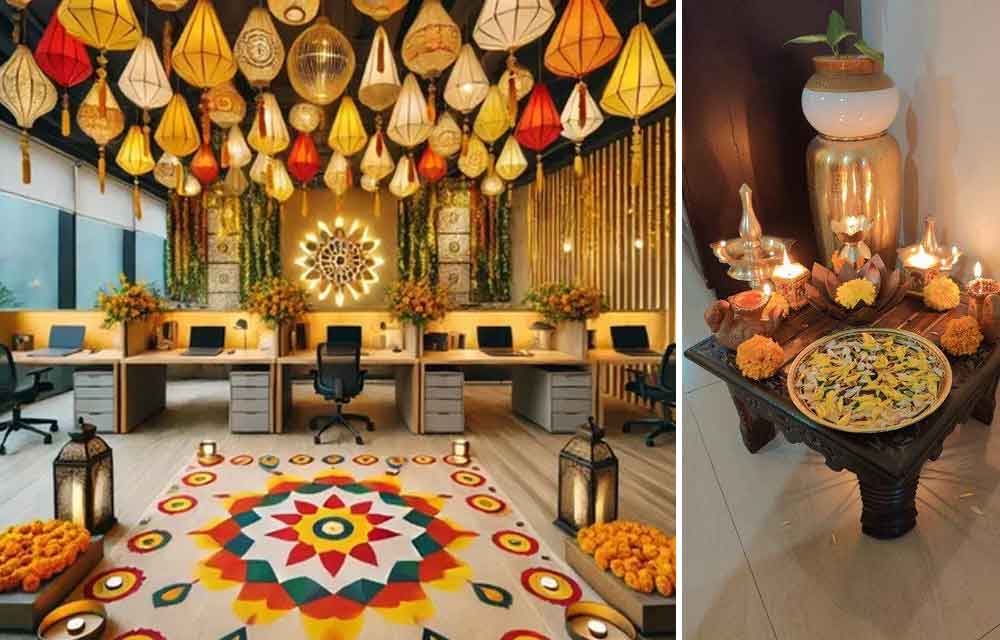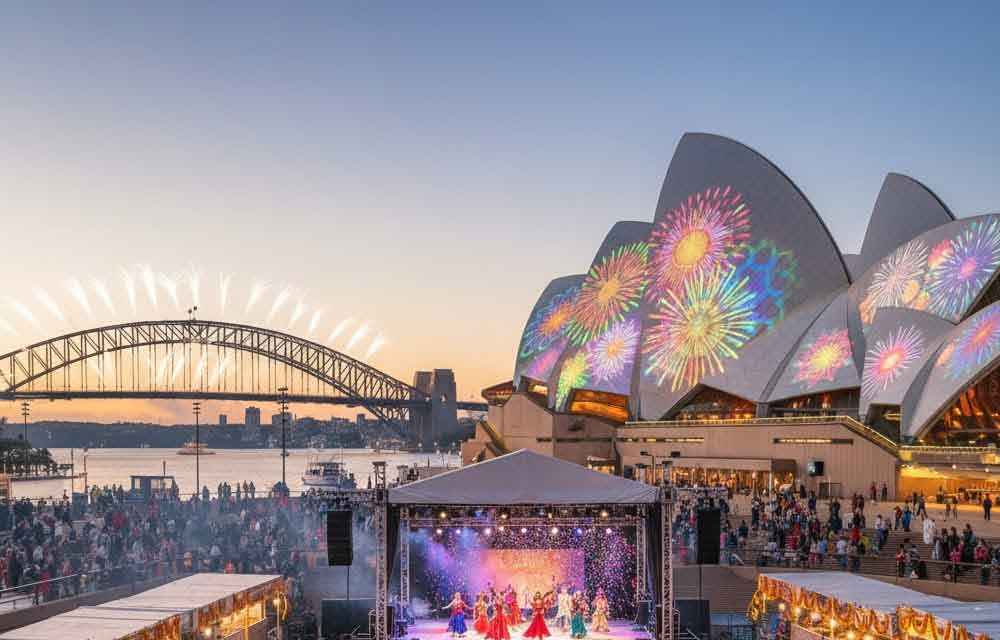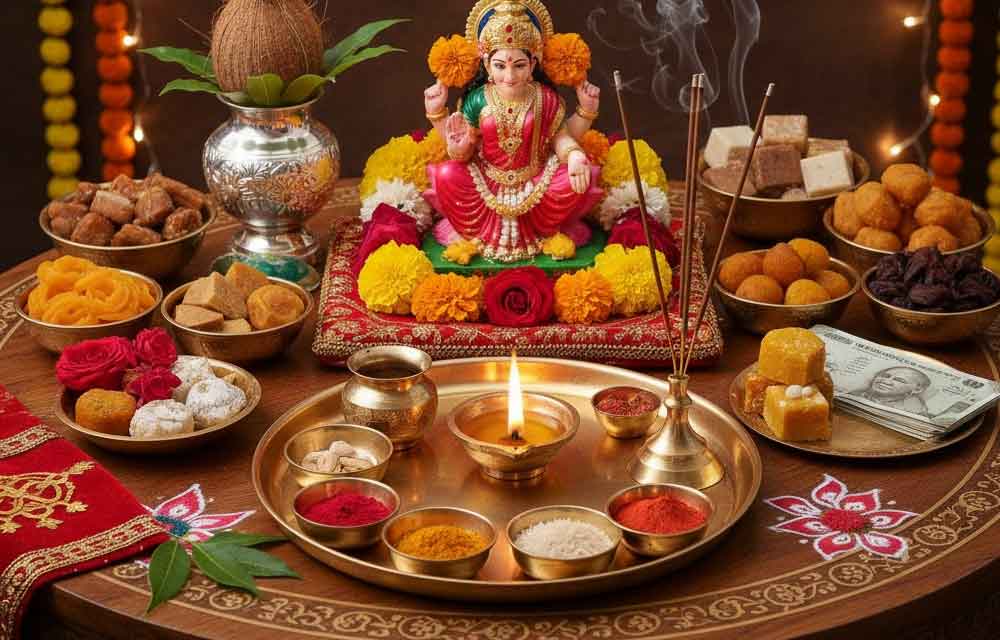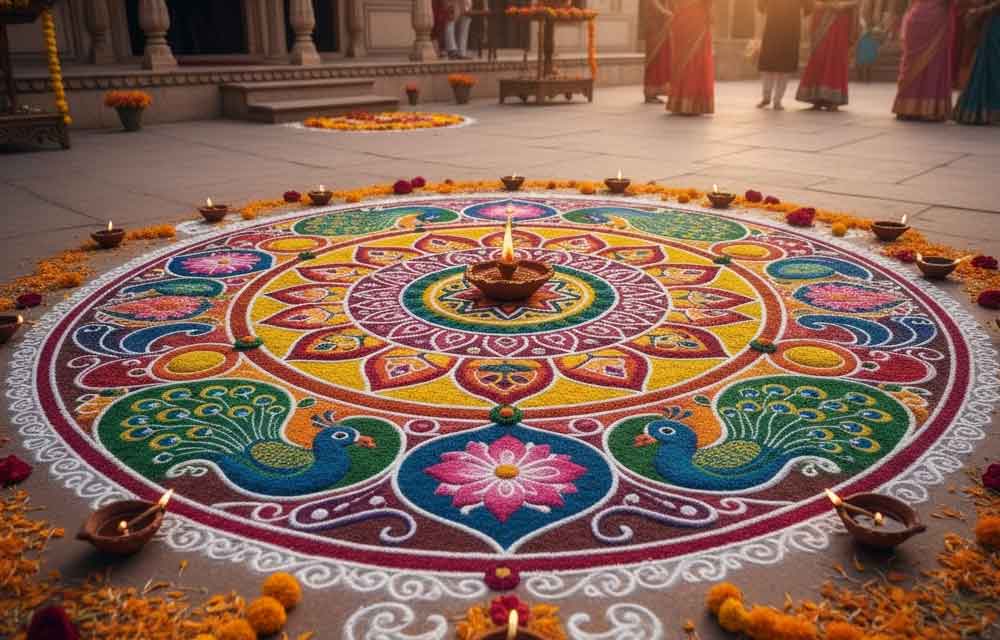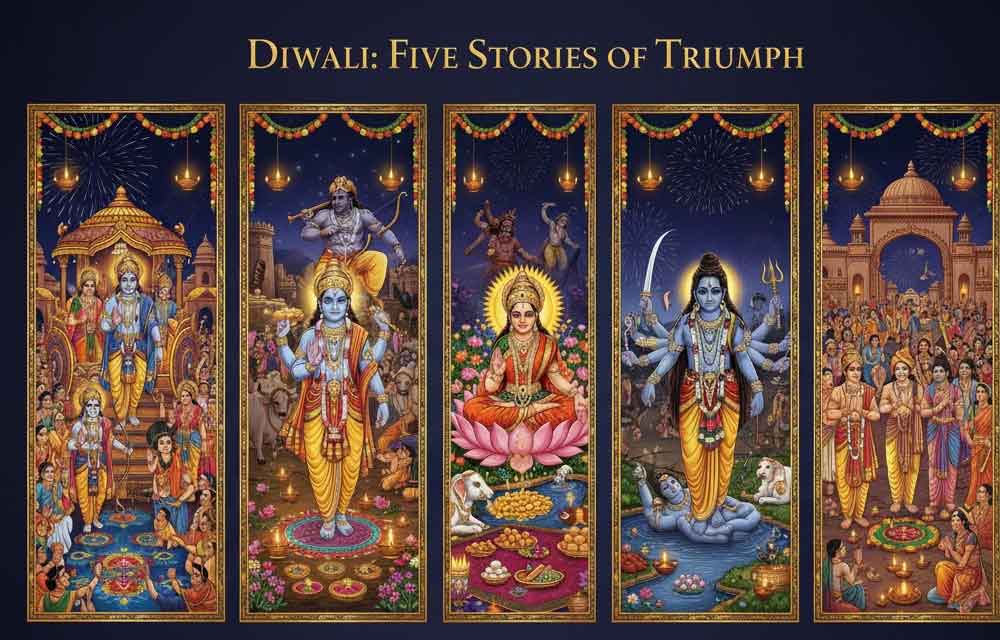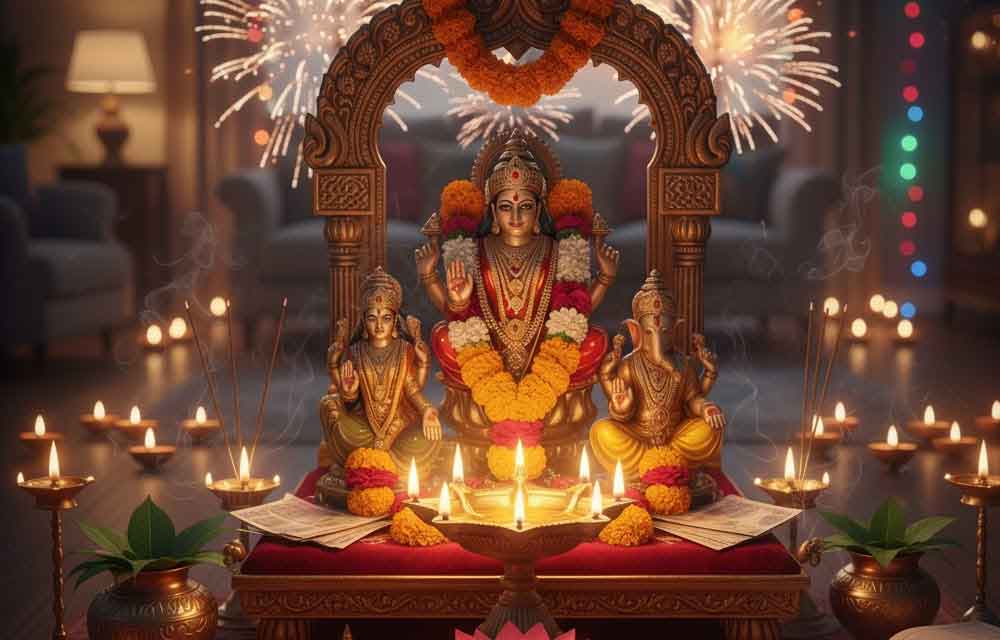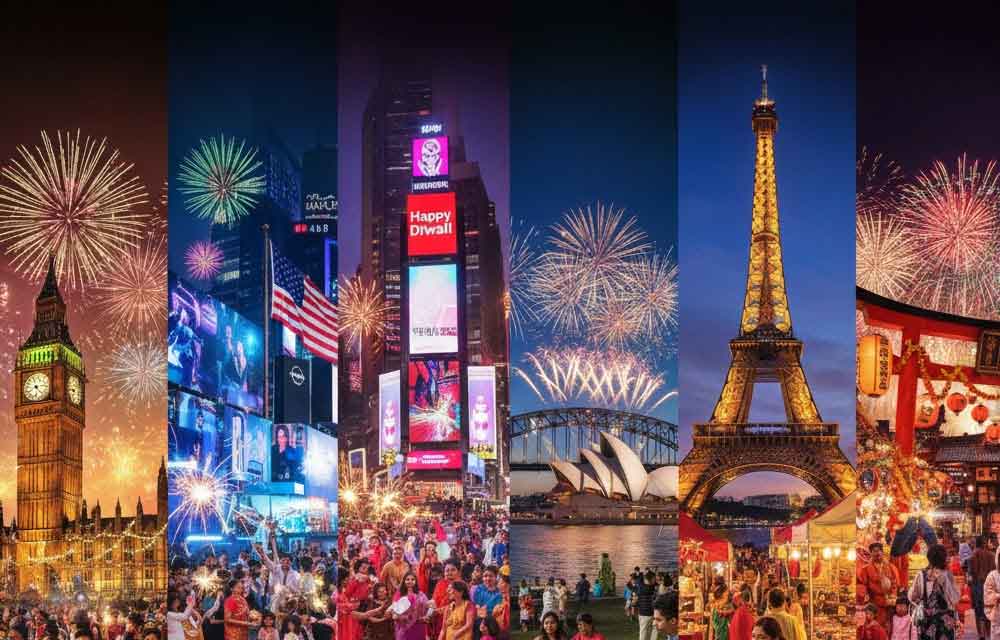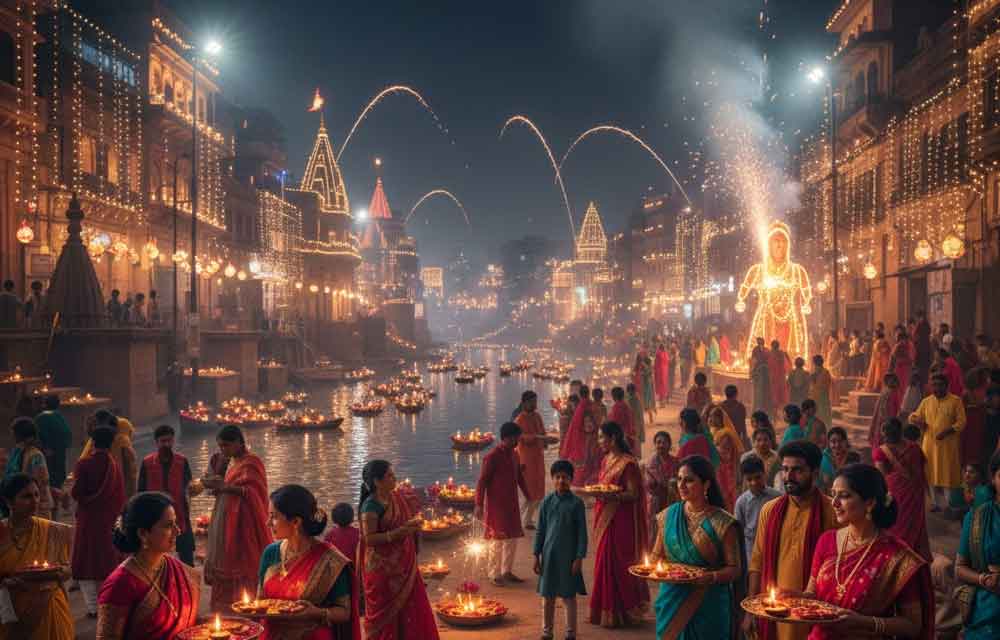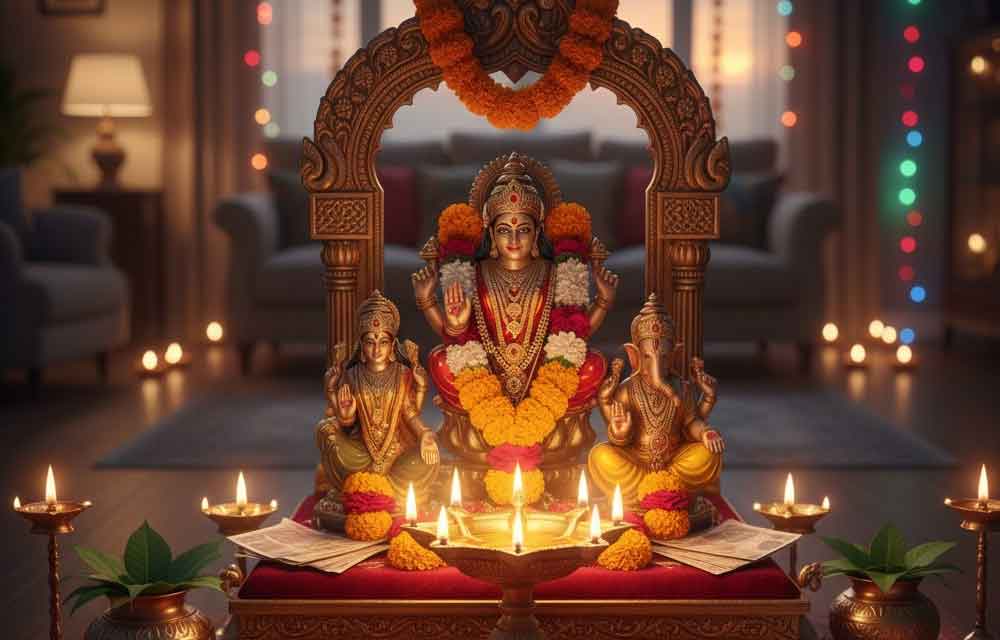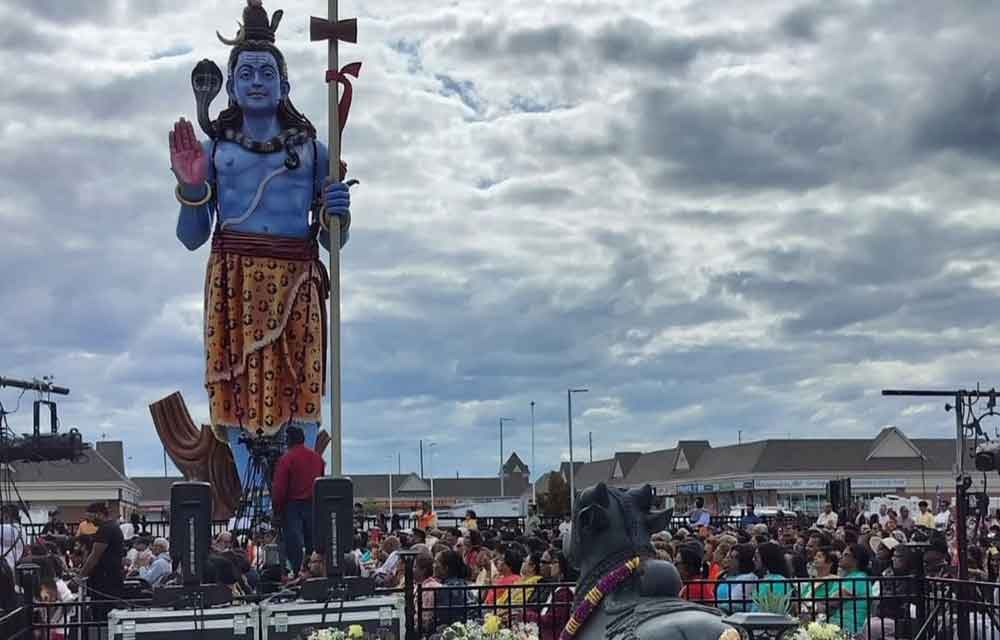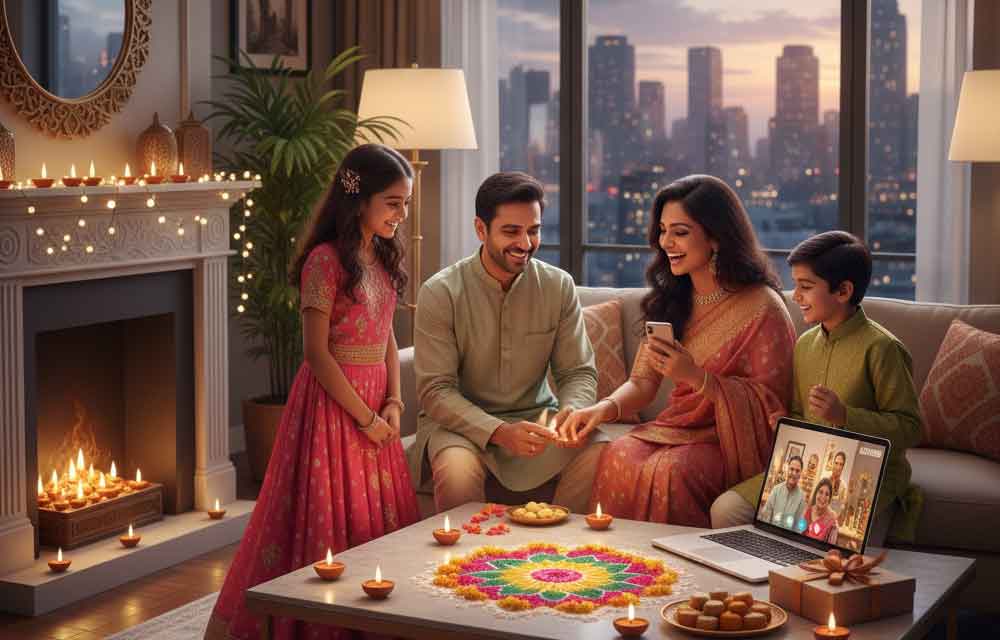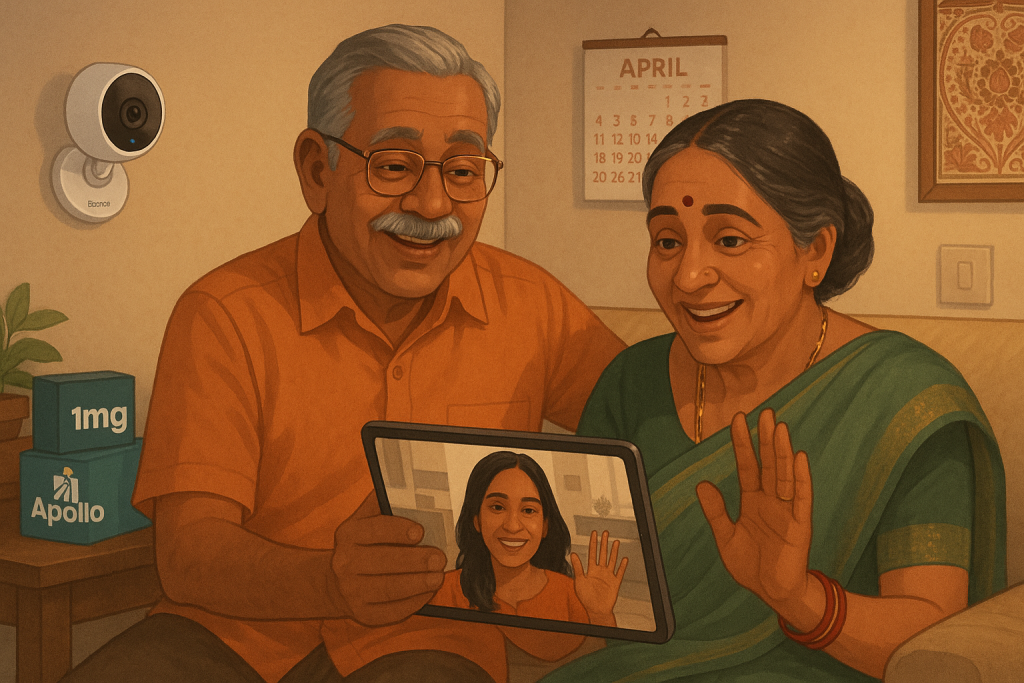10 Diwali Decoration Ideas Inspired by Traditional Rangoli & Symbols
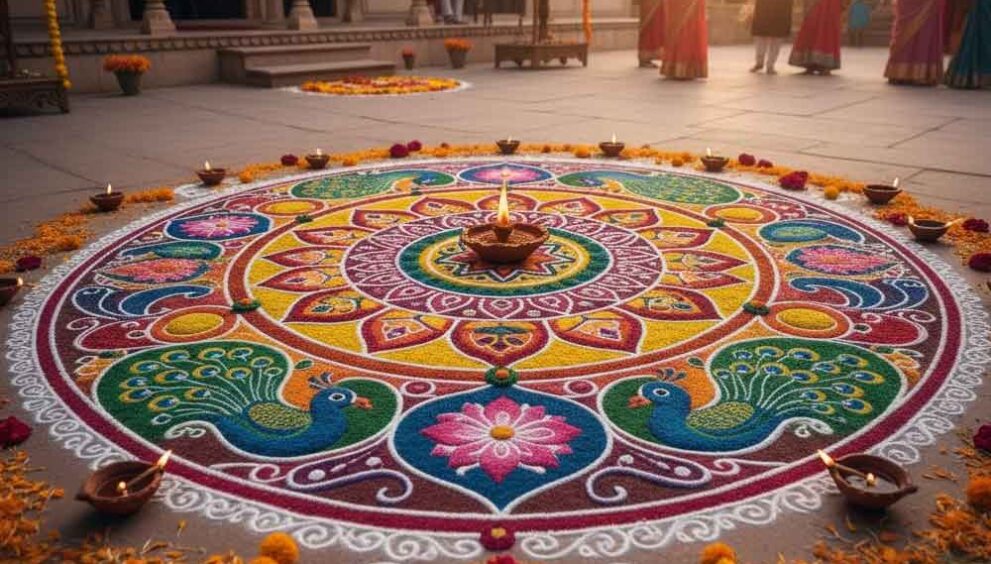
Diwali, the Festival of Lights, is a time when homes transform into radiant sanctuaries of joy, prosperity, and spiritual energy. While diyas and string lights have their timeless charm, incorporating traditional rangoli patterns and sacred symbols into your decor creates a deeper connection with the festival’s spiritual essence.
This year, let’s blend ancient artistry with modern creativity to craft a home that doesn’t just look beautiful—it resonates with divine energy and cultural authenticity.
1. Grand Entrance Rangoli with Floral Mandalas
The Spiritual Significance: The entrance rangoli isn’t merely decorative—it’s a sacred welcome for Goddess Lakshmi and positive energies into your home.
How to Create It:
- Use traditional materials like colored rice flour, flower petals, and kumkum
- Start with a central lotus motif symbolizing purity and enlightenment
- Incorporate geometric patterns representing cosmic harmony
- Add diyas at cardinal points for directional protection
- Enhance with fresh marigold and rose petals for natural fragrance
Modern Twist: Create a semi-permanent rangoli using stencils and washable rangoli colors that last throughout the five-day celebration. For apartments, use rangoli stickers or floor decals that mimic traditional designs.
Pro Tip: Place small tea lights in glass holders within your rangoli design to create a mesmerizing interplay of light and color after sunset.
2. Sacred Symbol Wall Art Gallery
The Spiritual Connection: Hindu symbols like Om, Swastik, and Sri Yantra carry profound vibrational energy that purifies and elevates the home environment.
How to Execute:
- Create a dedicated wall featuring multiple sacred symbols in varied sizes
- Use materials like brass, copper, or wood for authentic energy
- Frame traditional Diwali motifs like lotus flowers, peacocks, and kalash
- Mix framed artwork with 3D metal symbols for dimensional interest
- Include Sanskrit shlokas written in elegant calligraphy
Color Palette: Gold, saffron, deep red, and turmeric yellow—colors that embody prosperity and spiritual awakening.
DIY Option: Paint sacred symbols on reclaimed wood panels, adding gold leaf detailing for a handcrafted, artisanal look.
3. Diya Rangoli Chandelier
The Innovation: Suspend the traditional rangoli concept overhead by creating a chandelier inspired by mandala patterns.
Materials Needed:
- Circular metal frame or embroidery hoop
- Colorful threads or beads
- Small brass diyas or LED tea lights
- Decorative hangings (ghungroos, cowrie shells, or crystal beads)
Step-by-Step:
- Create a mandala pattern on the frame using threads in rangoli colors
- Attach diyas at symmetrical points along the pattern
- Add hanging elements at varying lengths
- Suspend from ceiling in the living room or puja area
- Light diyas during evening aarti for a celestial effect
Safety Note: For homes with children or pets, substitute traditional diyas with flameless LED alternatives.
4. Peacock Feather Torana (Doorway Decor)
Symbolism: The peacock, Lord Krishna’s beloved bird, represents grace, beauty, and the celebration of life—perfect for Diwali’s joyous spirit.
Creation Guide:
- Use natural peacock feathers as the focal point
- String marigold garlands with mango leaves (traditional prosperity symbol)
- Add hanging elements: brass bells, decorative bandhanwar, or mirror work
- Incorporate the Om symbol or Ganesha motif at the center
- Attach small diyas that can be lit during evening
Placement: Adorn main entrance, puja room door, and balcony entrances.
Cultural Context: Mango leaves represent Kamadeva and Rati, bringing positive energy, while marigolds are considered Goddess Lakshmi’s favorite flower.
5. Lotus-Inspired Floating Centerpiece
The Sacred Lotus: Symbolizing spiritual enlightenment and detachment, the lotus emerges pristine from muddy waters—a powerful metaphor for Diwali’s victory of light over darkness.
Creating the Centerpiece:
- Use a wide, shallow brass or copper bowl (traditional metals)
- Float artificial or real lotus flowers
- Add floating diyas (oil lamps designed to float)
- Scatter rose petals and marigold blooms
- Place a small Lakshmi idol on a floating platform at the center
- Surround the bowl with a circular rangoli pattern
Placement Ideas: Dining table, coffee table, or entrance console.
Evening Enhancement: Light the floating diyas and dim overhead lights for an ethereal, temple-like ambiance.
6. Kalash and Rangoli Corner Shrine
Spiritual Foundation: The Kalash (sacred pot) symbolizes abundance, purity, and the presence of divinity—a must-have for authentic Diwali celebrations.
Setup Instructions:
- Designate a corner for a small decorated Kalash
- Create an intricate rangoli around the Kalash base
- Add coconut topped with mango leaves
- Surround with marigold garlands
- Place diyas in circular arrangement
- Include rice grains, turmeric, and kumkum in small containers
Enhanced Worship Space: Add a small murti of Goddess Lakshmi and Lord Ganesha, along with incense holders.
Daily Ritual: Light diyas twice daily during Diwali week and offer fresh flowers.
7. Wall-Mounted Rangoli Art Installation
Contemporary Meets Traditional: For those who want permanent rangoli-inspired decor or lack floor space.
Options to Explore:
- Canvas Art: Commission or create rangoli-patterned paintings
- Metal Wall Art: Laser-cut metal sheets with intricate kolam designs
- 3D Installations: Layer colored wood pieces to create dimensional rangoli
- Fabric Art: Batik or hand-painted silk panels with traditional motifs
- Mixed Media: Combine mirror work, beads, and painted patterns
Color Strategy: Use Diwali’s auspicious colors—red, yellow, orange, green, and gold.
Lighting Addition: Install strip lighting behind the installation for a glowing effect.
8. Swastik and Om Pathway Lighting
Sacred Geometry in Action: Guide divine blessings through your home using sacred symbols as lighting pathways.
Implementation:
- Create small Swastik designs at doorway thresholds using kumkum
- Place four diyas at each point of the Swastik
- Design an Om symbol in the living room center using tea lights
- Line corridors with alternating diyas and rangoli patterns
- Use brass diya stands at varying heights for visual interest
Material Choices:
- Traditional clay diyas for authentic energy
- Brass diyas for durability and elegance
- LED tea lights for child-safe options
Timing: Light the pathway at sunset and maintain throughout the evening.
9. Ganesha-Inspired Entryway Vignette
Remover of Obstacles: Begin your Diwali decor with Lord Ganesha’s blessings at the entrance.
Components:
- Central Ganesha murti on a decorated pedestal
- Circular rangoli pattern behind or around the idol
- Fresh flower garlands
- Modak offerings in a decorative plate
- Brass diya arrangement
- Incense holder with sandalwood or jasmine
Color Theme: Turmeric yellow and red—Ganesha’s auspicious colors.
Backdrop Options:
- Fabric panel with printed mantras
- String lights forming an arch
- Fresh banana leaf for traditional touch
10. Multilevel Diya Display with Geometric Patterns
Architectural Illumination: Create a stunning focal point using graduated levels and mathematical precision.
Design Concept:
- Use wooden platforms, inverted pots, or dedicated diya stands
- Arrange in pyramid or stepped formation
- Follow geometric patterns: triangles, squares, or circular arrangements
- Create symmetry inspired by rangoli principles
- Use different colored diyas (terracotta, painted, brass)
Pattern Ideas:
- Shri Yantra Formation: Sacred geometry representing divine energy
- Lotus Mandala: Circular arrangement mimicking lotus petals
- Swastik Grid: Four-directional symmetry
- Galaxy Spiral: Diyas arranged in spiral pattern from center outward
Location Suggestions: Puja room, balcony, or as a dining table centerpiece.
Safety Setup: Place on a stable, fire-resistant base away from curtains and flammable materials.
Color Psychology for Diwali Decor
Understanding traditional colors enhances spiritual alignment:
- Red: Energy, passion, and Shakti
- Yellow/Gold: Prosperity, knowledge, and divine blessings
- Orange: Enthusiasm, creativity, and warmth
- Green: Growth, harmony, and new beginnings
- White: Purity, peace, and spiritual light
Eco-Friendly Decoration Tips
Honor Mother Earth while celebrating:
- Use organic colors (turmeric, kumkum, flower petals)
- Choose clay diyas over disposable options
- Opt for reusable fabric and metal decorations
- Create rangoli with rice flour (birds can eat it later)
- Select LED lights with solar charging
- Compost flower decorations after festivals
Maintaining Spiritual Energy Throughout Diwali
Daily Rituals for Decorated Spaces:
- Light diyas during sunset and sunrise
- Refresh flower offerings daily
- Sprinkle sacred water (Gangajal) on rangoli
- Play Lakshmi mantras or bhajans
- Keep decoration areas clean and clutter-free
Five Days of Diwali: Each day carries unique significance—adjust decorations accordingly:
- Dhanteras: Emphasize Lakshmi symbols and money plants
- Naraka Chaturdashi: Focus on cleansing and light
- Diwali: Grand illumination and full decoration display
- Govardhan Puja: Add elements honoring Lord Krishna
- Bhai Dooj: Incorporate brother-sister symbols
Balancing Aesthetics with Authenticity
Guidelines for Meaningful Decor:
- Research symbol meanings before incorporating them
- Respect religious imagery—place deities at appropriate heights
- Maintain cleanliness as Goddess Lakshmi favors neat spaces
- Balance modern elements with traditional motifs
- Create spaces for actual worship, not just decoration
Photography and Sharing Your Diwali Decor
Capturing Your Spiritual Aesthetics:
- Photograph during golden hour or with diyas lit
- Showcase intricate rangoli details with close-ups
- Include elements showing scale and context
- Share the spiritual stories behind your choices
- Tag and inspire others in your community
Social Media Tips:
- Use hashtags: #DiwaliDecor #TraditionalRangoli #HinduFestival
- Share time-lapse videos of rangoli creation
- Explain symbolism in captions for educational value
- Create before-and-after transformation posts
Conclusion: Creating Sacred Spaces with Intention
Diwali decoration transcends mere aesthetics—it’s about creating vibrations of prosperity, purity, and divine welcome. By incorporating traditional rangoli patterns and sacred symbols, you’re not just beautifying your home; you’re inviting ancient wisdom and celestial blessings into your living space.
This Diwali, let every rangoli curve carry intention, every diya flame illuminate consciousness, and every sacred symbol anchor divine energy. May your decorated home become a temple of light, love, and spiritual abundance.
Shubh Deepavali! May Goddess Lakshmi bless your home with eternal prosperity.
Frequently Asked Questions
Q: How long before Diwali should I start decorating? A: Begin major decorations 2-3 days before Diwali. Complete thorough cleaning (considered highly auspicious) one week prior. Create main rangoli on Diwali morning for fresh, vibrant appearance.
Q: Can I mix different regional rangoli styles? A: Absolutely! Kolam (Tamil Nadu), Alpana (Bengal), Muggu (Andhra Pradesh), and Rangoli (North India) can blend beautifully, representing India’s cultural diversity.
Q: Are there any symbols to avoid in Diwali decor? A: Avoid placing religious symbols in bathrooms, on floors where people walk, or in inappropriately low positions. Treat all sacred imagery with respect.
Q: How do I preserve my rangoli for multiple days? A: Use quality rangoli colors, apply a light spray of water-diluted hairspray, create in protected areas, and gently touch up faded sections daily.
Q: What’s the significance of using odd numbers of diyas? A: In Hindu tradition, odd numbers (especially 5, 7, 11, 21) are considered auspicious and are preferred for religious offerings and decorations.
About HinduTone.com: Your trusted source for authentic Hindu traditions, spiritual guidance, and cultural celebrations. Explore more festival guides, puja procedures, and spiritual wisdom on our platform.

 English
English 